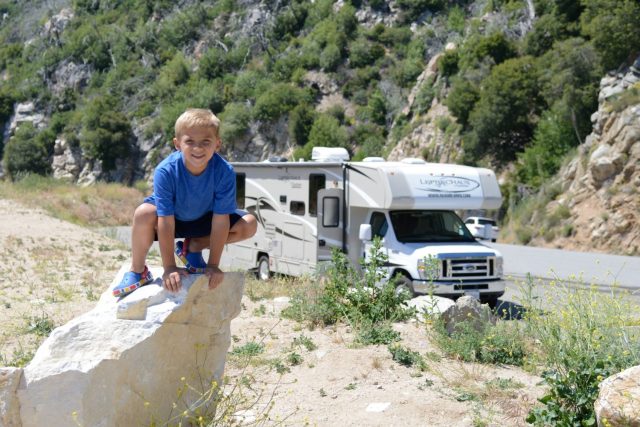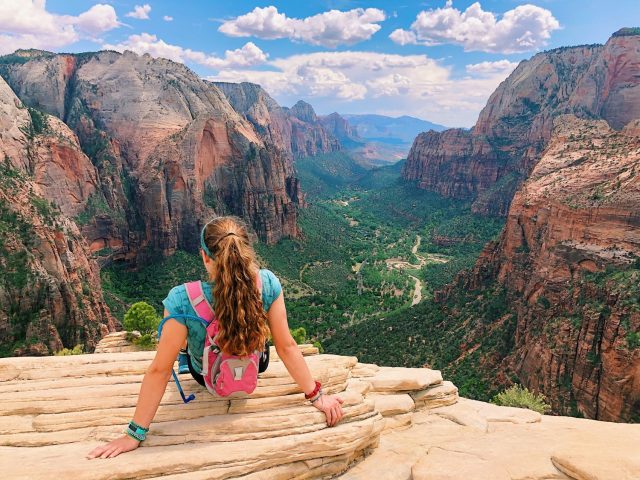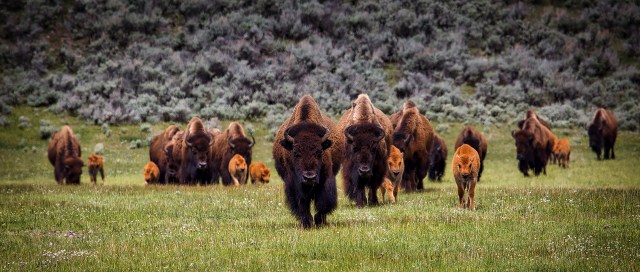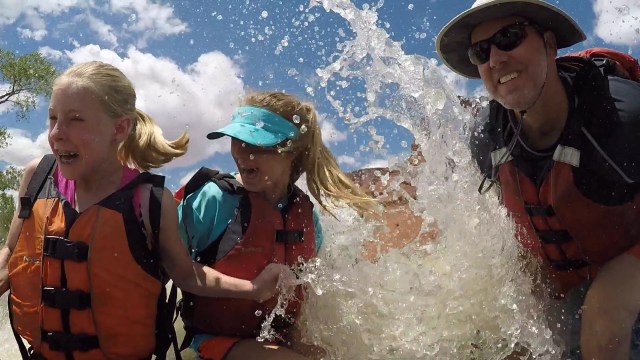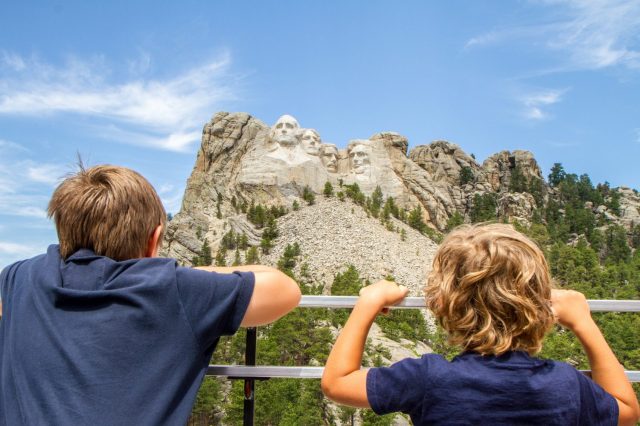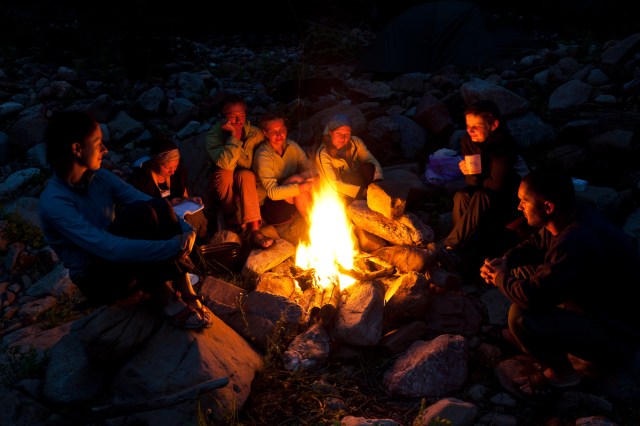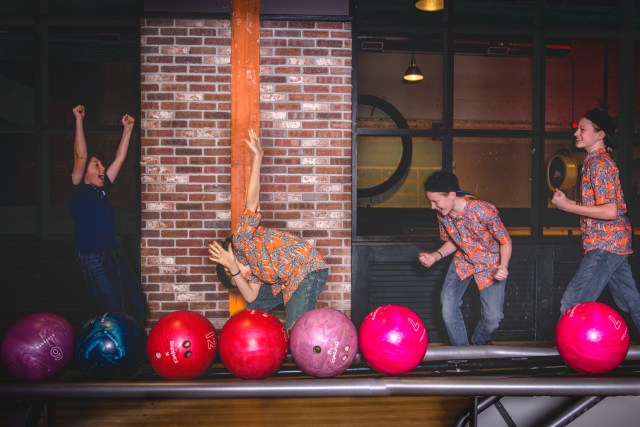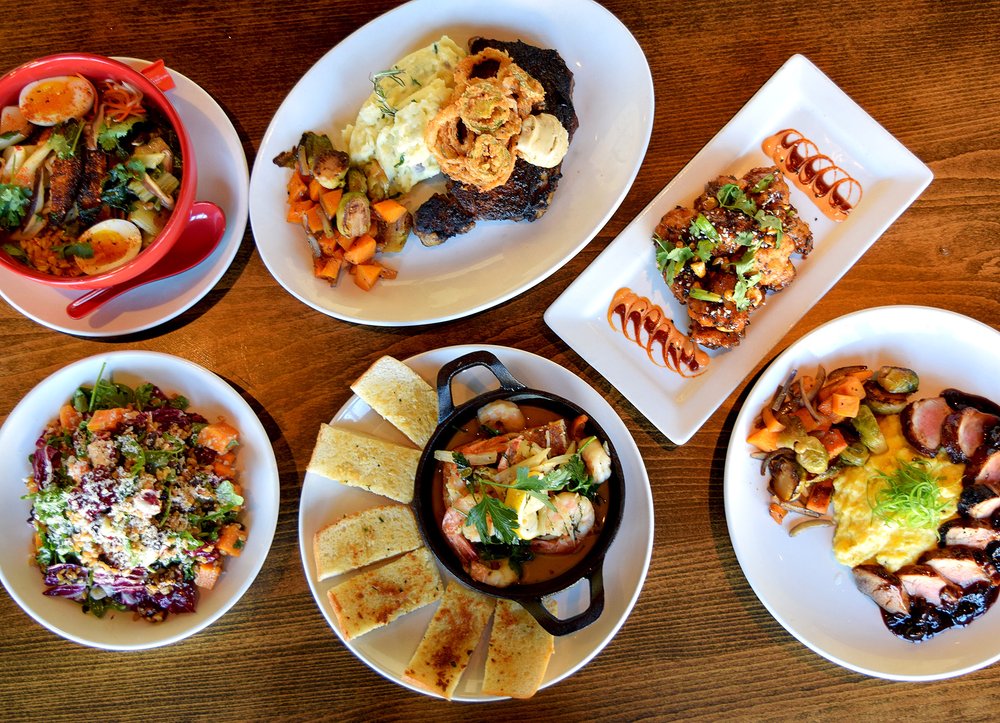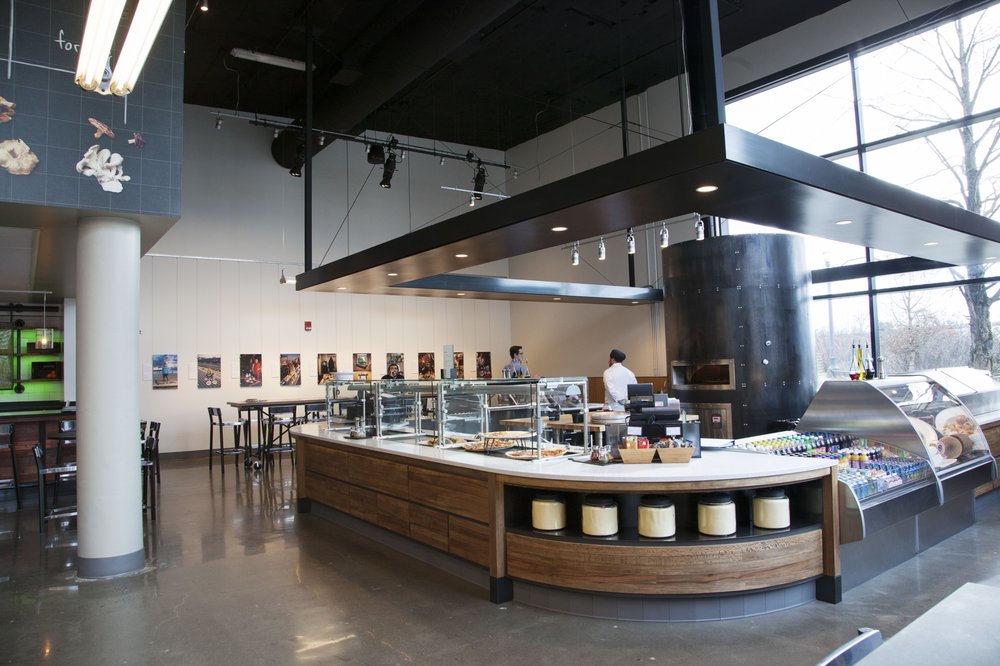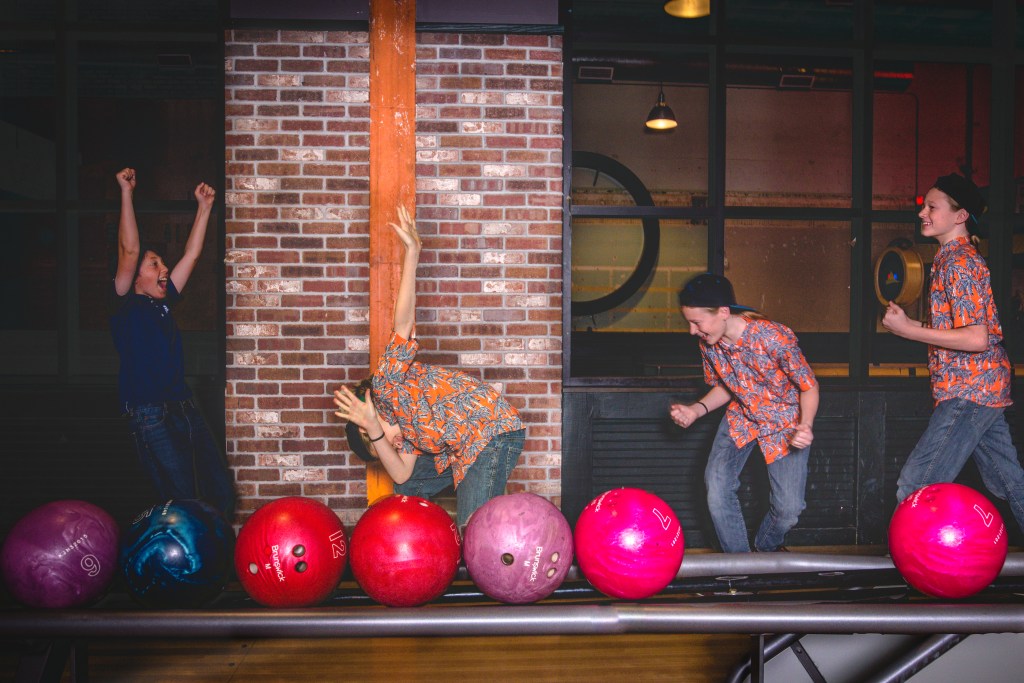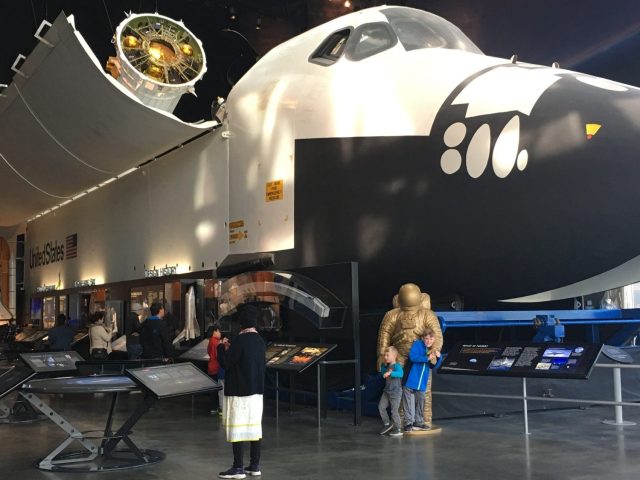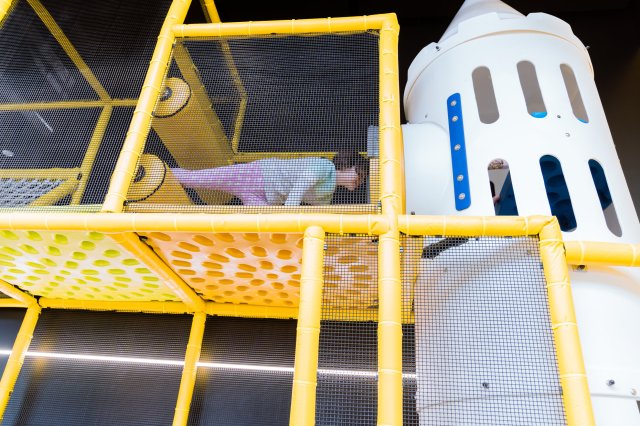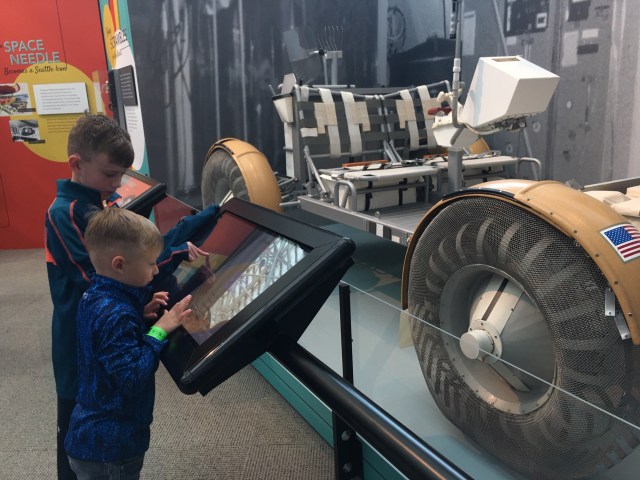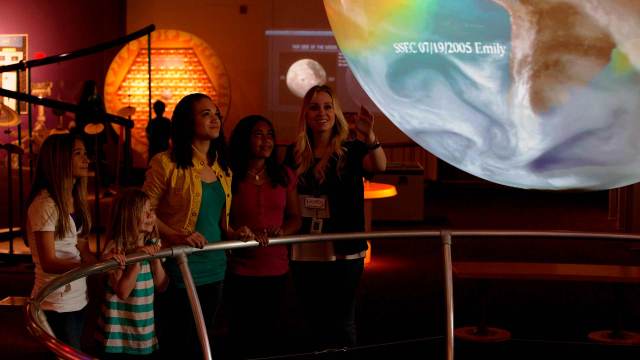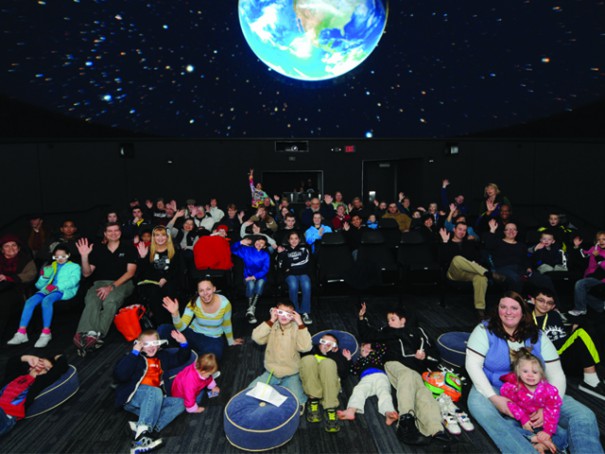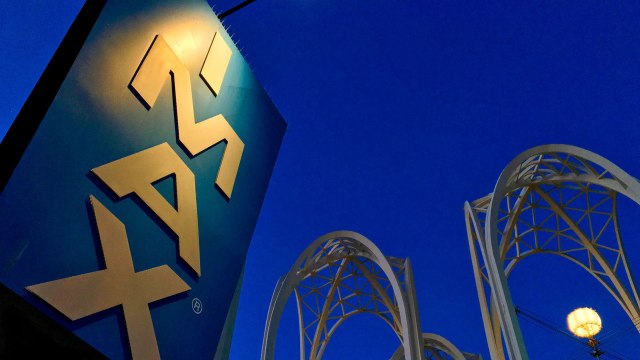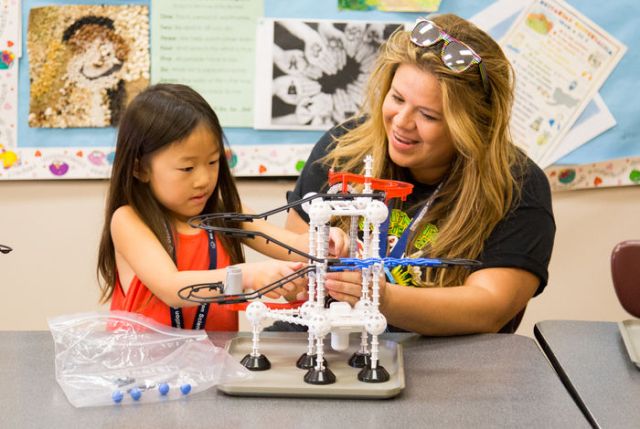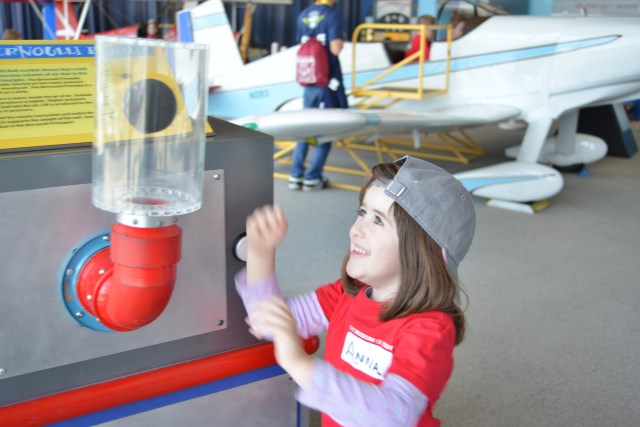From spelunking, canyoneering and canoeing to stargazing, fossil hunting and fly-fishing, America’s national parks offer up a ton of exhilarating activities for your tiny explorers. Whether it’s a program led by park rangers or by national parks-approved concessionaires, each one is a spine-tingling good time. Read on to see our 12 picks for coolest national park adventures. Bonus: Find out how to help them become Junior Civil War Historians!
photo: Zion Rock & Mountain Guides via Facebook
Canyoneering in Zion National Park, Utah
Climb, hike, swim and rappel through one of the most stunning landscapes in North America. Zion Rock & Mountain Guides will take the family on a canyoneering adventure—no experience necessary. You’ll rappel in amazing slot canyons, down-climb over rock chimneys, swim in pools and explore places very few people see. The guides tailor the trip to your comfort level, so little canyoneers can enjoy the challenge without being in over their heads!
Cost: Full Day (6-8 hrs) $150-$110/person depending on number of climbers. Short Day (4-5 hrs) $130-$115/person depending on number of climbers.
Ages: 4 & up Open: Year-round Zion Rock & Mountain Guides Family Canyoneering Adventure
1458 Zion Park Blvd.
Springdale, Ut 84767
435-772-3303
Online: zionrockguides.com
Photo: National Park Service
Meet Sled-Dogs in Denali National Park, Alaska
Skeeter has a silly side, Annie is a social butterfly, Red Top likes to snuggle—who are these guys? They’re the sled dogs of Alaska’s Denali National Park. These Alaskan huskies are the only sled dogs in the USA that help protect a national park and the wildlife that lives there. In winter they’re working dogs, but in summer they like to play and love being petted by visitors. Take a ranger-led tour of the kennels, and learn how a dog sled works. Who knows, this visit may inspire a future Iditarod contender in your family!
Cost: Free All ages Ranger-led tours in summer only (mid-May – mid-Sept.) Kennels open to visitors year-round. Accessible via courtesy shuttle bus from Denali Visitor Center bus stop. Be at bus stop 40 mins before your tour starts.
Sled Dog Demonstration & Kennel Visit
Denali National Park George Parks Hwy.
Denali Park, Ak 99755
907-683-9532
Online: nps.gov/dena/planyourvisit/sled-dog-demonstrations
photo: Diver Ed’s Dive-In Theater via Facebook
Dive-In to Acadia National Park, Maine
Diver Ed will take you and your crew ‘o landlubbers out on his ship, The Starfish Enterprise, to boldly go where only a few kids have gone before. Ed and his Playmobil sidekick “Mini Ed” dive down with special video and sound gear that lets you see and hear the ocean floor in real time from the comfort of the deck. When Ed and Mini Ed come back up, they bring the creatures with them! You’ll have a chance to get up-close-and-personal with sea cucumbers, toad crabs, scale worms, lobsters, scallops and more from the underwater world of Acadia National Park. Don’t worry, all the creatures are safely returned to their homes.
Open: Year-round
Good to know: You can also catch a tour with a park ranger/naturalist on board. These are extended tours geared towards grownups but children are always welcome too. Cool bonus: Diver Ed’s Newfoundland Water Rescue Dogs go along on the trips.
Cost: $15/4 & under, $30/5-11, $40/12+, $35/senior, Reservations recommended. All ages
Dive-In Theater with Diver Ed
105 Eden St.
Bar Harbor, Me 04609
207-288-3483
Online: divered.com
photo: Grand Canyon Railway
Take a Train to Grand Canyon National Park, Arizona
“This is a stick up!” Watch out for wild west villains on the Grand Canyon Railway. Make your young cowgirl or cowboy’s first trip to the Grand Canyon extra special by throwing in a vintage locomotive ride (train robbery, shoot out and cowboy songs included) from Williams, Az to the South Rim of the Grand Canyon. You’ll ride in your choice of classic train car: Coach Class, First Class or Observation Dome, all stellar spots for taking in the stunning views.
Cost: 2 & under are free. Coach Class Round Trip $45/ages 2-15, $75/ages 16+; First Class Round Trip $110/ages 2-15, $140/ages 16+; Observation Dome Round Trip $140/ages 2-15, $170/ages 16+
Age: All ages
Grand Canyon Railway Williams Depot
233 N. Grand Canyon Blvd.
Williams, Az 86046
928-635-4253
Online: thetrain.com
photo: Amy Moore via Everything Everywhere Travel
Hike IN a Volcano at Hawai’i Volcanoes National Park
A ranger-led hike of the Kīlauea Iki (little Kīlauea) trail will take you and your mini-volcanologists deep into the heart of Kilauea—a living volcano. You’ll see warm lava, hot steaming vents, cinder cones and spatter cones as you trek across the cracked floor of Kīlauea Iki Crater lava lake. Peer into the vent that erupted in 1959, shooting lava 1900 feet into the air to form the crater – it’s below the Pu‘u Pua‘i cinder cone (Pu‘u Pua‘i means Gushing Hill in Hawaiian). Head over to the Hawai’i Volcanoes National Park web site for upcoming tours. If there’s no ranger-led hike when you’re visiting, your family can enjoy the hike anyways. Check out Amy Moore’s adventures on the trail with her 4 and 6 year-old kiddos on Everything Everywhere Travel.
Good to know: Be sure to wear sturdy footwear and a hat. Bring rain gear and layer clothing (you may need warm clothes when you’re up high). Take along lots of water to stay hydrated. Healthy snacks are a must too! Kīlauea Iki Trail Round Trip: 4 miles Elevation 3,874 feet, see Trail Guide.
Hawai’i Volcanoes National Park
1 Crater Rim Dr.
Hawaii National Park, Hi 96718
808-985-6000
Online: nps.gov/havo
photo: Leon Reed via Flickr circa 1956
Fossil Hunting at Badlands National Park, South Dakota
If you’ve got a fossil nut in the family, Badlands National Park is the place for you. Prehistoric rhinos, three-toed horses, saber-toothed cats and more roamed here—and left behind one of the richest fossil beds in the world. Rangers will tell you all you need to know about the kind of fossils that can be find in the park, and what they reveal about the ancient life of the area. Visit the Paleontology Lab and watch paleontologists working with fossils. Then don a hat, sunscreen and closed-toed shoes (don’t forget the water bottle) and dig for fossils along the White River Badlands Trail. Maybe your little diggers will come across an undiscovered ancient species!
Good to know: Ranger-Led Programs run Memorial Day Weekend to just after Labor Day Weekend.
Cost: Free
Age: All ages
Badlands National Park
25216 Ben Reifel Rd.
Interior, Sd 57750
605-433-5361
Online: nps.gov/badl
photo: James Marvin Phelps via Flickr
Stargazing in Death Valley National Park, California
“The sky begins at your feet!” says an old advertisement for Death Valley National Park. Death Valley has some of the darkest night skies in North America, which make it perfect for watching shooting stars, viewing the Milky Way, and even the distant Andromeda Galaxy. For your visit to the hottest place on Earth, check in at the aptly-named Furnace Creek Visitor Center. Park rangers offer night sky programs and hold stargazing events with astronomy organizations – kids can peer through a high-powered telescope for a stellar experience!
Open: Winter and Spring
Good to know: Death Valley is certified by the International Dark-Sky Association. This means the night skies are very dark there and minimally impacted by city lights.
Program Cost: Free
Ages: All ages
Death Valley National Park
Death Valley, Ca 92328
760-786-3200
Online: nps.gov/deva/index.htm
photo: Austria01 via TripAdvisor
Watch Bats Fly at Carlsbard Caverns National Park, New Mexico
Things are going batty in New Mexico! – Every summer evening, a swarm of Brazilian Free-tailed bats take to the skies in search of food. Your family can watch the bats’ exodus from the outdoor amphitheater at Carlsbad Caverns. Rangers tell you all about them and unlock the secrets of a bat’s life. Early risers can watch the pre-dawn return of the bats, and see their spectacular dives back into the cavern – reaching speeds of 25 mph!
Open: Summer
Good to know: The best bat flights are in July and August when baby bats join the flight.
Bat Flight Program Cost: Free, Reservations not required.
Ages: All ages
Carlsbad Caverns National Park
3225 National Parks Hwy.
Carlsbad, Nm 88220
575-785-3012
Online: nps.gov/cave
photo: National Park Service
Canoeing in Congaree National Park, South Carolina
Known as “the redwoods of the east,” Conagree National Park is home to rare old-growth bottomland trees – most of the old-growth forests in the eastern US were lost to logging but Conagree’s trees have been preserved. The 6 and up set can explore the wilderness on a ranger-led canoe trip down Cedar Creek. Look out for the towering Loblolly Pine, a huge Sweetgum, and Persimmons. Watch out for swamps too!
Good to know: Check out the just-opened “Kids in Parks” TRACK Trail – a 2.1 mile loop through some amazing forest in Congaree. Head over to Kids in Parks web site for bug spotting, scavenger hunts and more.
Guided Canoe Tours Cost: Free
Ages: At least one adult (18 or older) must be in each canoe. PFD’s are provided but participants must also know how to swim without the aid of one.
Congaree National Park
100 National Park Rd.
Hopkins, Sc 29061
803-776-4396
Online: nps.gov/cong
photo: Becky Gregory via Flickr
Become a Young Scientist at Yellowstone National Park, Montana & Wyoming
Kids 5 and up can earn a Young Scientist patch (14 and over get a key ring) in a program that’s just at Yellowstone. Purchase a self-guiding booklet for $5 – then solve science mysteries in the park. Discover the science behind bubbling mud pots, spurting geysers and amazing hot springs – and the history of the fascinating animals that call Yellowstone home (including the return of the grey wolf).
Good to know: Let them test their animal instincts. Kids can take part in Wildlife Olympics—comparing their skills to animals’! Tuesdays, Thursdays and Saturdays at various locations. See schedule for details. Self-guiding booklets available at the Canyon and Old Faithful Visitor Centers.
Cost: $5 Ages 5-9: Self-guiding booklet available at the Old Faithful Visitor Center (where you’ll also need to borrow a Young Scientist Toolkit to help with investigations).
Ages: 10-13 and 14 & up (including grownups).
Yellowstone National Park
Wy 82190
307-344-7381
Online: nps.gov/yell
photo: National Park Service
Spelunking in Mammoth Cave National Park, Kentucky
No parents allowed! Kids 8-12 can take the Trog Tour at Mammoth Cave National Park; they’ll explore the subterranean life of the world’s longest known cave on this off-trail adventure. Young cavers will hike, crawl and belly-slide through secret passages and learn all about the animals of Mammoth Cave and how they survive in the darkness. The Trog Tour is cool (in both senses of the word) but they’ll be snug in provided coveralls (just bring shorts and t-shirt to wear underneath). The 10 and up set can even try a Beginning Caving class! All equipment (coveralls, helmets, knee pads and head lamps) is provided by the park. Visitors must provide their own boots. No personal caving equipment allowed. Parents, guardians and/or chaperones must attend the first 30 mins of the tour to assist when children “suit up” with their equipment.
Trog Tour Cost: $16; 2 p.m. daily Reservations strongly recommended.
Ages: 8 – 12
Mammoth Cave National Park
1 Mammoth Cave Pkwy.
Mammoth Cave, Ky 42259
270-758-2180 Online: nps.gov/maca
photo: Fly Fishing the Smokies
Fly Fishing in Great Smoky Mountains National Park, North Carolina
“It was this big!” Little fishermen and women will be telling you tall tales of the one that got away after this awesome fly-fishing experience in the Smokies. Your family can explore the mountains and streams on a private fly-fishing trip – kiddos are supplied with kid-sized rods and waders. The patient guides will teach the kids to fly-fish (if they’re not already experts) – it’s easy to learn, and fun, especially when they catch the big one!
Cost: $87.50/person
Ages: No minimum age (5 & up recommended)
Good to know: Great Smoky Mountains National Park is one of several national parks and battlefields where kids can become a Junior Civil War Historian. Read on for more.
Fly Fishing the Smokies
Bryson City, Nc
828-488-7665
Online: flyfishingthesmokies.net
Become a Civil War Historian
History buffs can learn all about the Civil War at national parks and battlefields and earn a special badge too. Parks include: Natchez National Historical Park, where your family can see what life was like in the American South just before the Civil War; and Wilson’s Creek National Battlefield where the first major battle west of the Mississippi was fought.
Online: www.nps.gov
photo: Helen Walker Green
Passport to Your National Parks
Do you and the fam like to visit as many National Parks as you can? Keep a record of the parks you’ve visited with the Passport to Your National Parks. Buy a Passport at most Ranger Stations and Vistor Centers and online at eParks.com and don’t forget to let your Junior Ranger ask a Park Ranger for a park passport stamp. The passport has tons of info and maps, and there’s even a Kid’s Passport Companion. Passport To Your National Parks $8.95 Kids’ Passport To Your National Parks Companion $6.95 Passport To Your National Parks and Kids’ Passport Companion Set $14.95 Check out other ways kids can enjoy national parks on the National Parks web site.
What are your favorite national parks adventures for kids? Do you plan on trying any of the activities featured here? Tell us in the Comments below.
— Helen Walker Green
